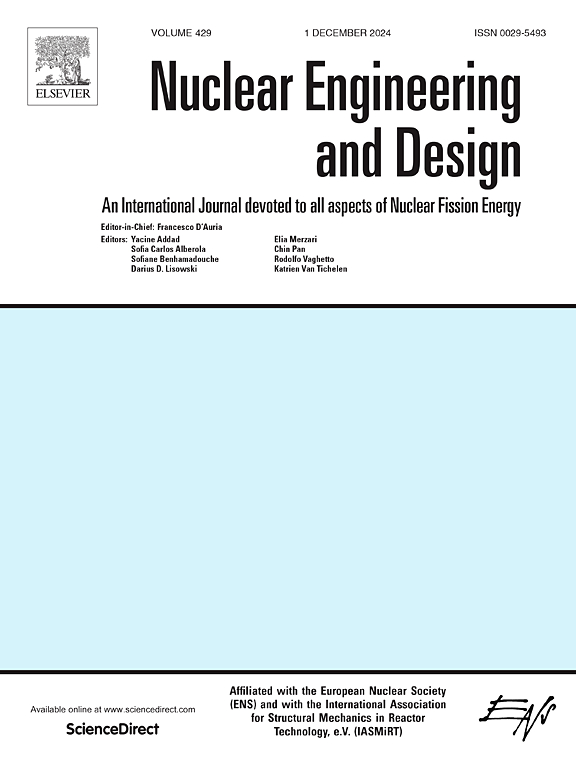Preparation and performance research of TRISO particle with niobium layer
IF 1.9
3区 工程技术
Q1 NUCLEAR SCIENCE & TECHNOLOGY
引用次数: 0
Abstract
In this study, a niobium (Nb) layer was prepared by spouted-bed chemical vapor deposition (CVD) to replace the outer pyrolytic carbon (OPyC) layer in TRISO particles as a novel configuration for enhancing fuel performance. Such a configuration in TRISO particles is favorable for the following reasons: Nb has good mechanical properties, which can relieve the tensile stress on the silicon carbide (SiC) layer better with applied compressive stress compared with the OPyC layer. Furthermore, owing to its better thermal conductivity and good contact with the SiC layer, the Nb layer in the TRISO particle can transport the heat generated from the kernel to the coolant in a more efficient manner. In addition, the Nb layer is believed to protect SiC from mechanical damage better with its ductility behavior during the fuel element fabrication, while the OPyC layer is a brittle material. The deposited Nb layer has a thickness of 10 μm, indicating the designed characteristics such as high density and a pure phase. The interface between the SiC and Nb layers exhibits tighten bonding without any visible debonding or gaps. The nanoindentation results suggest that the average hardness of the Nb layer is approximately 5 GPa and the average Young’s modulus is about 110 GPa, which are remarkably higher than the OPyC layer. Simultaneously, the stress and failure fractions for both designs are calculated. The new configuration confirms that the Nb layer exerts a better compressive stress effect on the SiC and thus the failure fraction of fuel particles can be lowered to some extent. In addition, finite element calculations indicate that the application of the Nb layer in TRISO particle is conducive to reducing the peak temperature by about 50 K. Based on the above advantages, the performance of the reactor can be efficiently improved.
求助全文
约1分钟内获得全文
求助全文
来源期刊

Nuclear Engineering and Design
工程技术-核科学技术
CiteScore
3.40
自引率
11.80%
发文量
377
审稿时长
5 months
期刊介绍:
Nuclear Engineering and Design covers the wide range of disciplines involved in the engineering, design, safety and construction of nuclear fission reactors. The Editors welcome papers both on applied and innovative aspects and developments in nuclear science and technology.
Fundamentals of Reactor Design include:
• Thermal-Hydraulics and Core Physics
• Safety Analysis, Risk Assessment (PSA)
• Structural and Mechanical Engineering
• Materials Science
• Fuel Behavior and Design
• Structural Plant Design
• Engineering of Reactor Components
• Experiments
Aspects beyond fundamentals of Reactor Design covered:
• Accident Mitigation Measures
• Reactor Control Systems
• Licensing Issues
• Safeguard Engineering
• Economy of Plants
• Reprocessing / Waste Disposal
• Applications of Nuclear Energy
• Maintenance
• Decommissioning
Papers on new reactor ideas and developments (Generation IV reactors) such as inherently safe modular HTRs, High Performance LWRs/HWRs and LMFBs/GFR will be considered; Actinide Burners, Accelerator Driven Systems, Energy Amplifiers and other special designs of power and research reactors and their applications are also encouraged.
 求助内容:
求助内容: 应助结果提醒方式:
应助结果提醒方式:


